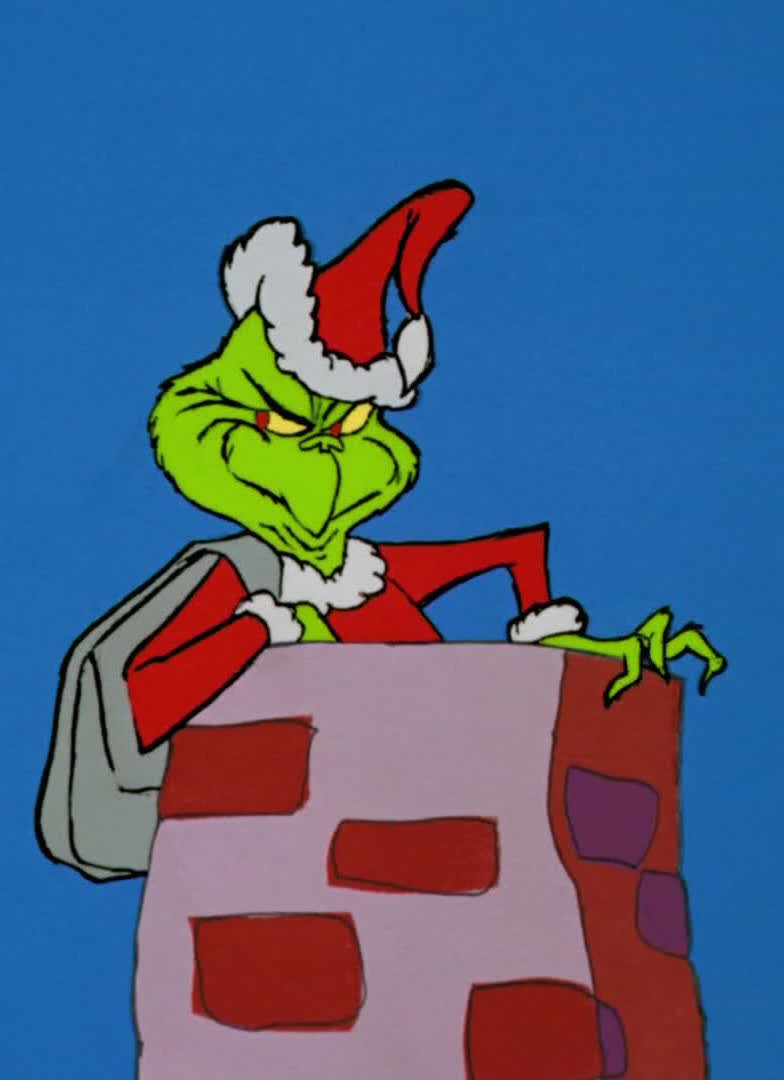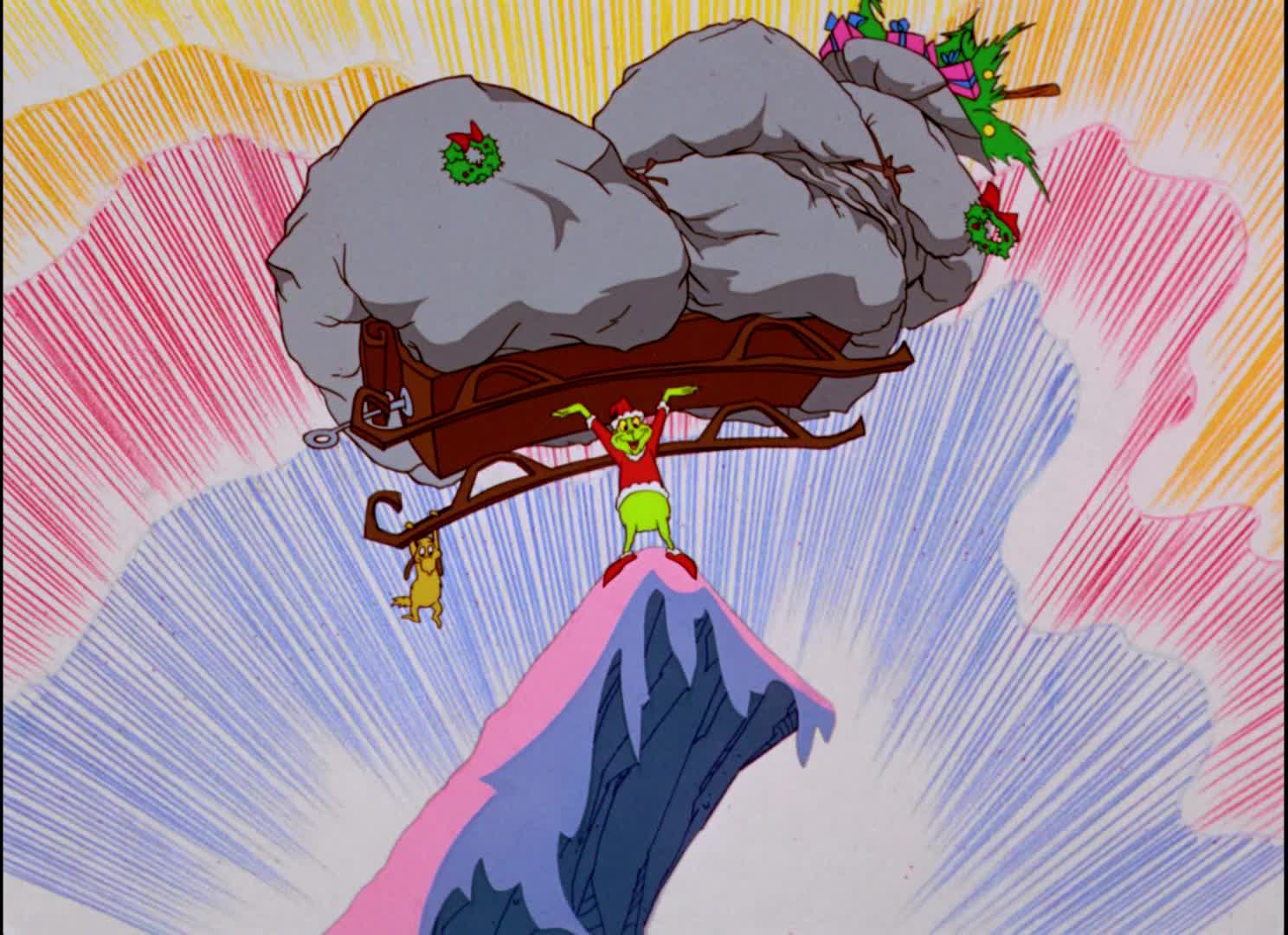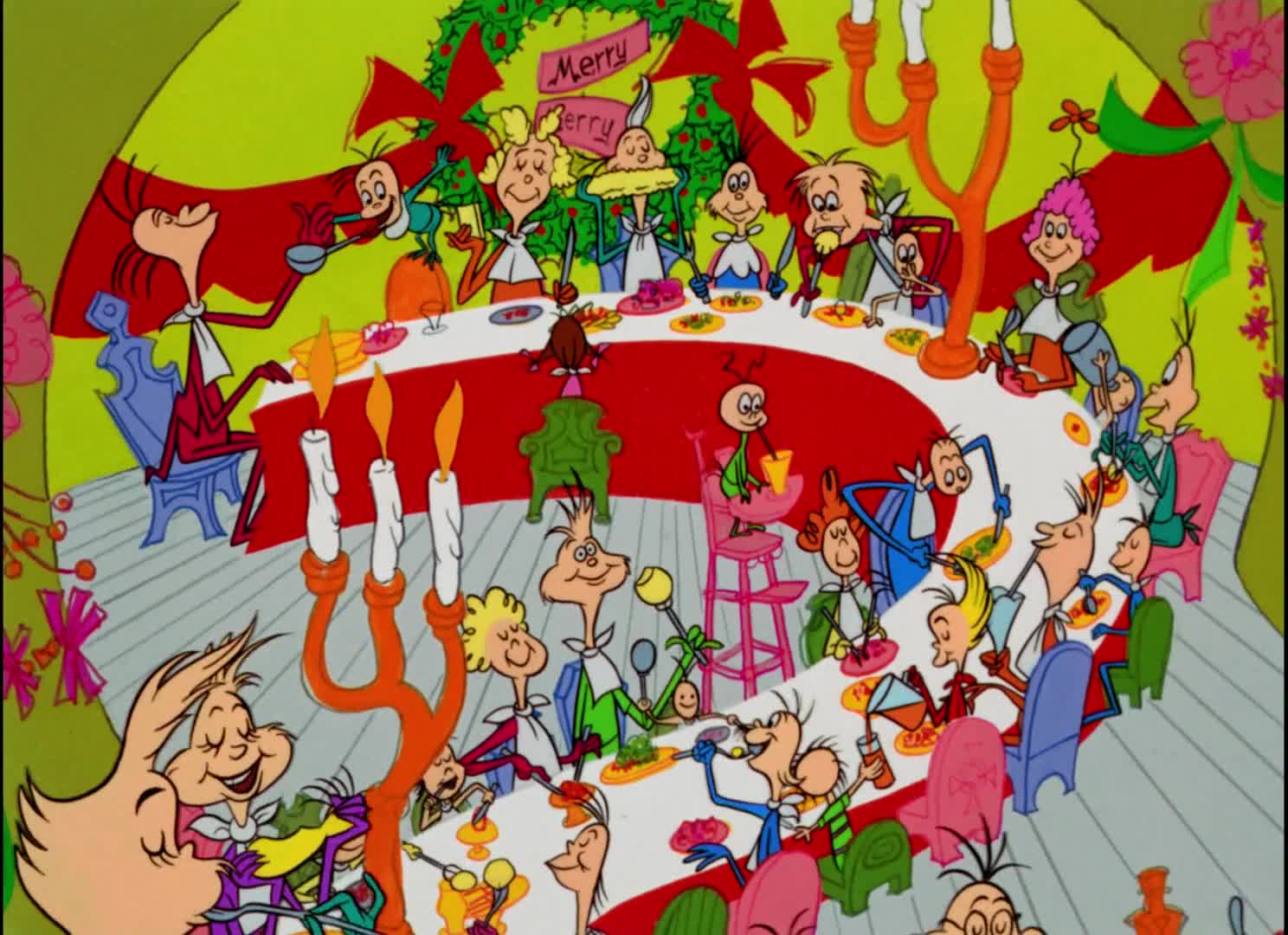A few members of Team Experience will be sharing posts on their favorite Christmas movies. Here's Tim...
 Today we celebrate the 50th anniversary of a great classic: it was on December 18, 1966, that the world got its first look at the animated How the Grinch Stole Christmas, adapted from the 1957 book by Dr. Seuss and directed by cartoon legend Chuck Jones. There are too many ways we could quantity the importance of this television special: as the last of Jones's masterpieces before he settled into Elder Statesman status, as the progenitor of a line of generally strong Seuss adaptations that didn't stop until the beginning of the 1980s, as the third in a line of deathless cartoon Christmas specials that premiered one per year from 1964 to 1966 (Rudolph the Red-Nose Reindeer and A Charlie Brown Christmas are the others).
Today we celebrate the 50th anniversary of a great classic: it was on December 18, 1966, that the world got its first look at the animated How the Grinch Stole Christmas, adapted from the 1957 book by Dr. Seuss and directed by cartoon legend Chuck Jones. There are too many ways we could quantity the importance of this television special: as the last of Jones's masterpieces before he settled into Elder Statesman status, as the progenitor of a line of generally strong Seuss adaptations that didn't stop until the beginning of the 1980s, as the third in a line of deathless cartoon Christmas specials that premiered one per year from 1964 to 1966 (Rudolph the Red-Nose Reindeer and A Charlie Brown Christmas are the others).
But since it's the holiday season, let's start with how this is one of the loveliest and most heartfelt stories of the True Meaning of Christmas ever filmed. That is, in no small part, because neither Seuss nor Jones were overt sentimentalists: the author had a slightly arch, caustic tone to his highly precise rhyming that's too self-aware to be saccharine, and Jones built his career on anarchic cartoon comedies, making no fewer than three films on the theme "how many ways can we shoot Daffy in the face?" And with that kind of attitude underpinning the proceedings, How the Grinch Stole Christmas ends up being a little bit saltier than most of the other canonical Christmas classics. Obviously, it gets to the expected place where we all learn important lessons and feel better and embrace tradition, but it works a little bit harder than usual to make sure that it's earned.

When the Grinch's heart grows two and a half sizes – courtesy of an especially playful visual gag – it's feels all the more uplifting because there's nothing cloying about it. It's weird and off-kilter, and that makes it so much more special than every long-forgotten Christmas story that plays things completely in earnest.
For all that, though, my own love for How the Grinch Stole Christmas owes less to its message than to its art. This is nothing less than one of the great cartoons of the '60s. Jones had been tossed out on his ear by Warner Bros. a few years earlier (and then the studio shuttered, ending the glory days of Bugs Bunny and all the rest), and had started drifting into a more experimental mode; Grinch was the last roaring triumph of his well-honed style, with visual gags that wouldn't feel too terribly out-of-place in a Road Runner or Daffy cartoon – when Max the dog hauls a ladder across a snowy field, he's a dead ringer for the accident-prone Wile E. Coyote. And the character animation is superb, giving us a Grinch made of extreme facial expressions that pop emotionally and give him a stunning amount of inner life and amazingly fluid transitions between those expressions, distorting and warping the character in the best Jonesian tradition.

Grinch isn't quite as abstract as some of Jones late Warner cartoons, with their backgrounds made out of indistinct blobs of color, but it's striking in its minimalism. There are huge fields of solid color, with the simplicity of a huge magenta or blue square creating an emotional response almost at a primordial level. The interiors of Whoville are a bit more distinct, but still sketched out as bold, striking collections of shape and color assembled with more of a sense of graphic elegance than narrative clarity. It's a thoroughly unreal space, one that doesn't to any meaningful degree evoke Seuss's own highly-characteristic style, but which does succeed in portraying the same sense of the pleasantly fantastic and otherworldly as Seuss, with big shapes of color defined by lines that steadily refuse to go even a little bit straight.

It's a sweet story told with great visuals, and you get to spend all 25 minutes listening to Boris Karloff, on top of it – there's really no downside here. Obviously it's a short film for children, but even so, it's an excellent piece of '60s cinematic pop art, ribboned with family-friendly dark humor. It holds up incredibly well to adult eyes as a great example of animation as an expressive medium, and the fact that it's also a great tribute to the most secular, non-denominational pleasures of the Christmas season makes it all the more impressive. 50 years haven't dated it one little bit.